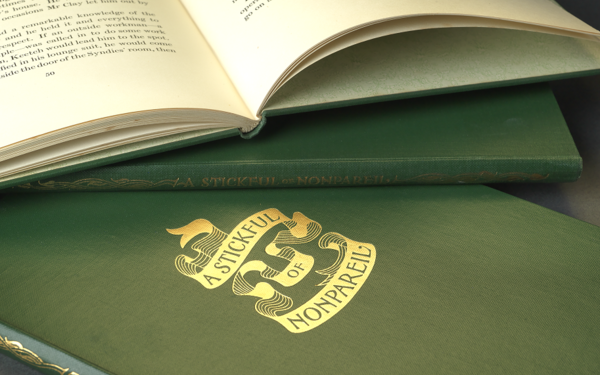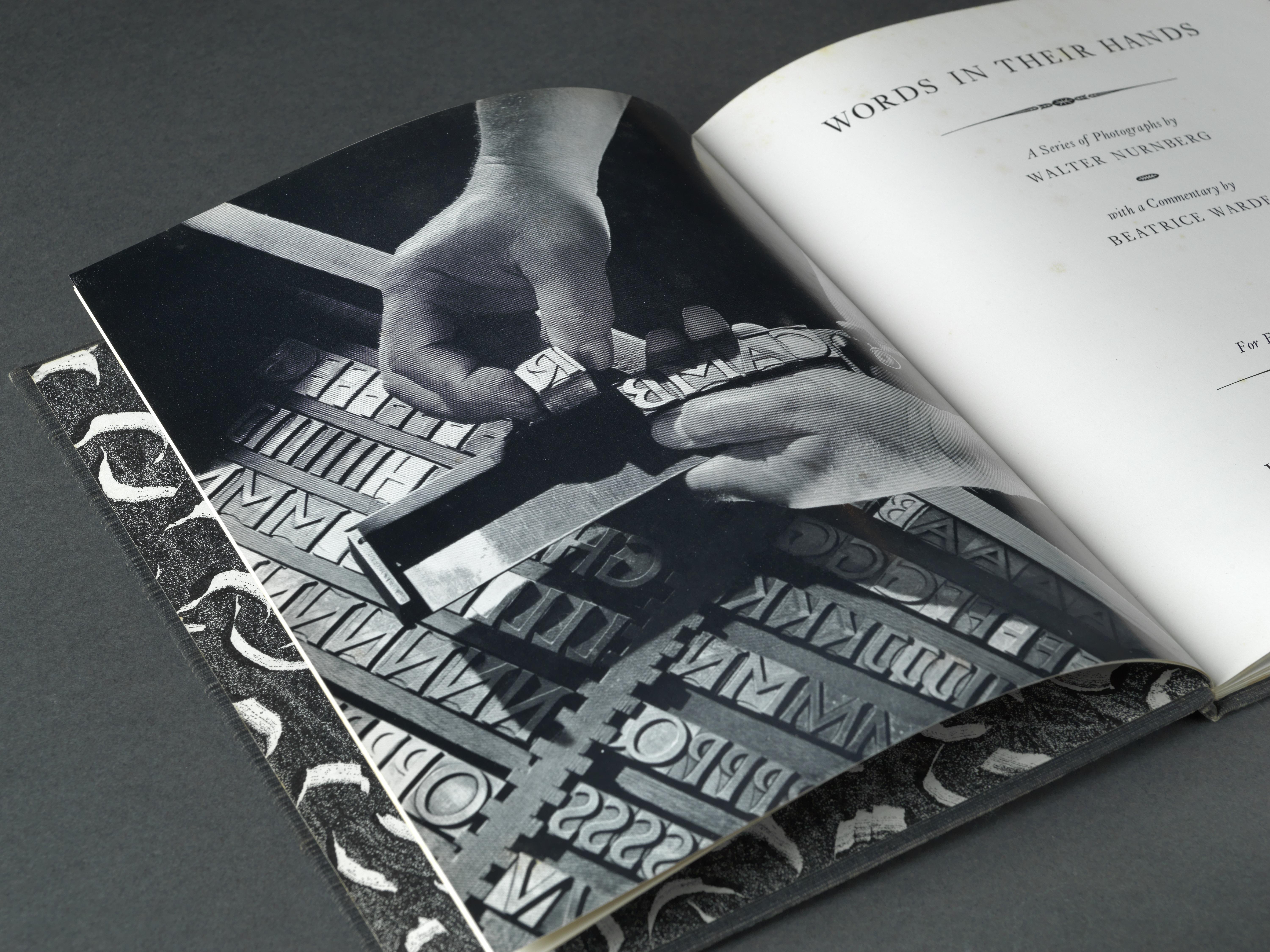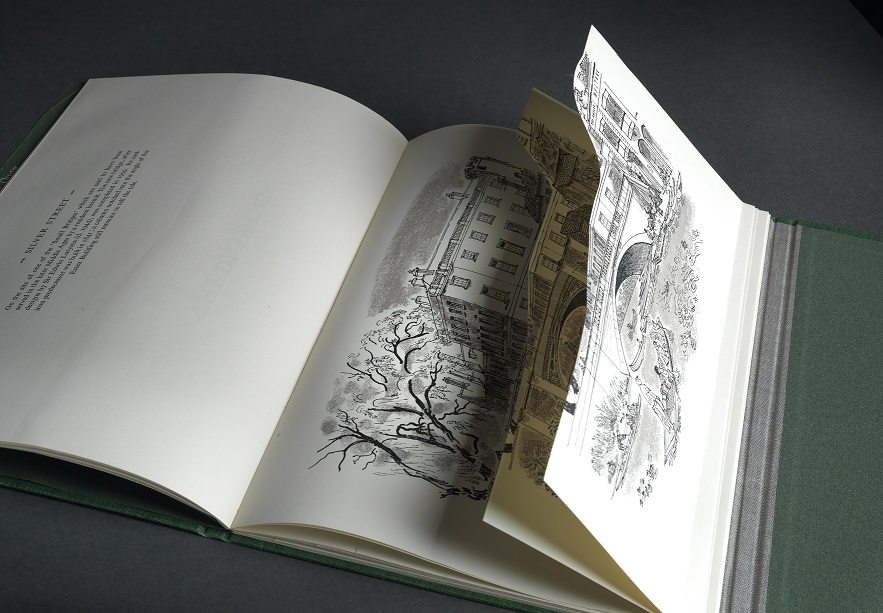The search for the missing Christmas books
Cambridge University Press has gathered a complete set of its celebrated Christmas Books for the first time

Produced as Christmas gifts: beautifully crafted and illustrated books were given by the Cambridge University Printer to ‘friends in printing and publishing’.
From 1930 to 1973, Cambridge University Press produced a slim, limited edition volume for Christmas, each one a testament to the craftsmanship and skill of its designers and printers.
But, perhaps because they were designed to be given away as gifts, the Press never had its own set of the books – until now.
Thanks to a mixture of donations and detective work that began in 2014, the Press has managed to grow its collection from just one book to a complete set. In doing so, it has gathered together a treasure trove of pages, print, words and pictures that offers a fascinating look at Christmases past.
“Books have always been popular as printers’ gifts, but the Cambridge Christmas Books really stand out,” said Cambridge University Press archivist, Ros Grooms.
“The books were published for a long time, with a pause for the Second World War, and demonstrate real excellence in the way they are put together. They aren’t showy, but all the signs of quality in printing, typography and design would have been obvious to the people receiving them.”

Looking for books
Work to compile that set started with the unexpected arrival in 2014 of a donation from the descendants of a former employee, Hector John Rumsey, who gave his collection to the Press, sparking an effort to find the remaining volumes.
These were collected through a mixture of further donations and some dedicated searching by Gavin Swanson, who until last year worked in the Press’s Academic publishing group.
Gavin said: “Initially, I got a list of the books that we didn’t have and used that, together with what was essentially a catalogue, containing a couple of paragraphs of description for each of the Christmas Books, their titles and a list of illustrations.
“I would trawl through the websites of book dealers to find the missing volumes and finally came up with an original copy of the last book we needed, 1939’s From London to Cambridge by Train, just before I left the Press, so I snaffled it as quickly as I could and that thankfully completed the collection.”
The Christmas Books were first produced under University Printer, Walter Lewis, who hoped they would showcase the Press’s printing and design skills as the British economy slowed at the beginning of the 1930s. By the time his successor, Brooke Crutchley, took over in 1946, the books had gained such a reputation that he continued the tradition.
Ros Grooms said: “Great care was taken over the books but their secret was really in the experience and skill of the Press’s compositors and printers. People were chosen to work on the books in recognition of their skill and they worked together to produce something really special.
“It’s very unusual to have a complete set of the Christmas Books because of the rarity of the early, pre-war ones, which never had a print run of more than 150 copies. To have such a set back at the Press really is the perfect Christmas present.”

The complete collection
The books cover a broad range of topics, but most have some connection to Cambridge or to publishing and printing, with around a third of them reprints of historical texts.
Among them are Bridges on the Backs from 1961, a lift-the-flaps book, beautifully illustrated by David Gentleman, which takes the reader along the River Cam and back in time, with overlays that reveal the changing appearance of Cambridge bridges through the centuries.
Other gems include A Stickful of Nonpareil from 1956, which tells the story of the Press at the turn of the 20th Century through the gently humorous reminiscences of employees and the artwork of Edward Ardizzone, better known for his drawings from the frontlines of World War Two and for children’s books, including Stig of the Dump.

Other books include:
This small, plain, 44-page volume is notable as the first of the Christmas Books. It was produced in 1930, edited and with an introduction from Stanley Morison, who was the Press’s typographical advisor. Only 100 copies were printed, intended for a small circle of friends in the printing and publishing trades.
Dating from 1964, this book contains a series of beautiful and evocative photographs by Walter Nurenberg, who was as one of post-war Britain's leading industrial photographers. The black and white photographs feature the hands of people at the Press as they work with metal printing blocks and machines to create its books. A commentary by the renowned writer and scholar of typography, Beatrice Warde, accompanies the pictures.
Limited to 500 copies, the 1969 Christmas Book was an essay on the ironwork of Cambridge, written by the local blacksmith, ironworker, author and artist, Raymond Lister. His words are presented together with drawings by Richard Bawden showing some outstanding examples of the city’s decorative ironwork, including the gates of several colleges and the city’s Botanical Gardens.
For Gavin, retirement and completion of the Press’s collection has not put an end to his search. He said: “I’ve actually started collecting them myself and now have about 10 or 11 of those that are easier to come by. They are works of art really, each has its own story behind it and if I can get hold of any then I’m thankful.”
Ros Grooms added: “Looking through the pages, it’s easy to imagine the pleasure that these little books would have given to someone opening one for the first time at Christmas. These are an important piece of our heritage and we are very grateful to Gavin for his hard work and to all those who kindly donated what must have been much-loved items, to allow us to preserve them for many Christmases to come.”
